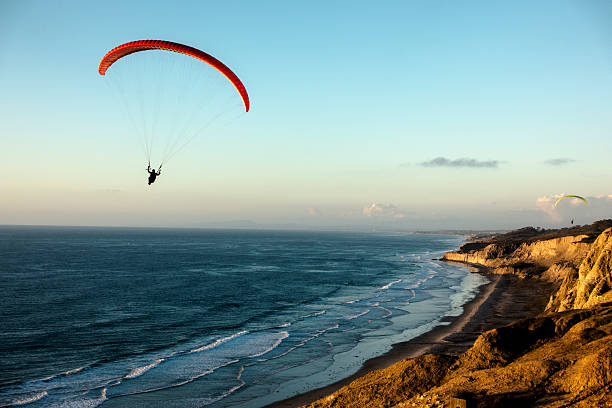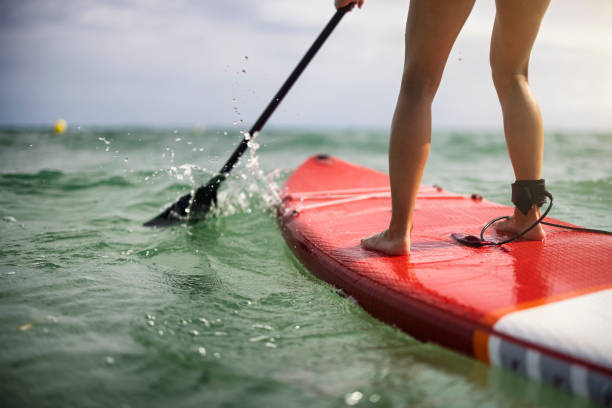Paragliding is an exhilarating sport that captures the essence of freedom and adventure. From breathtaking mountain takeoffs to coastal glides over the ocean, it’s a favorite among thrill-seekers looking to soar through the skies with minimal equipment. For those intrigued by the idea of flying like a bird, understanding what paragliding involves is essential.
What Is Paragliding?
Paragliding is a recreational and competitive sport where a pilot flies a lightweight, foot-launched glider. Unlike hang gliding, which uses a rigid frame, paragliders are made from flexible, non-motorized fabric wings. These wings are carefully designed to create lift and allow pilots to maneuver in the air. Pilots are strapped into a harness suspended below the wing, which features several lines for control.
How Does Paragliding Work?
The principles behind paragliding are similar to basic aerodynamics. When the glider’s wing catches air, the shape of the wing creates lift, allowing the pilot to ascend and stay airborne. Steering and altitude control are achieved through brake handles attached to the glider’s lines. Pulling on one side makes the wing turn in that direction, while pulling both handles slows the glider or increases its descent rate.
Key Components of a Paragliding Setup
A safe and efficient paragliding experience depends on quality equipment. Here’s what a standard setup includes:
- The Wing (Canopy): The fabric structure that captures air and enables flight. Constructed with cells that fill with air, it forms an aerodynamic shape.
- Harness: The seat for the pilot, equipped with straps to secure the pilot during the flight.
- Reserve Parachute: An essential safety feature that can be deployed in case of a primary equipment failure.
- Helmet: Provides protection and is mandatory in most places for safety.
- Lines and Risers: These connect the wing to the harness, enabling steering and weight shifts.
- Variometer: A device that measures altitude and rate of climb or descent, helping pilots find thermal lifts and avoid dangerous downdrafts.
Types of Paragliding
Paragliding can take different forms based on the type of flight experience sought:
- Thermal Flying: This involves using rising columns of warm air (thermals) to gain altitude and extend flight time.
- Cross-Country (XC) Flying: Aimed at covering long distances, pilots use thermals and wind patterns to travel across varied terrains.
- Soaring: Uses wind hitting a mountain or cliff to create lift that allows pilots to glide along the ridge.
- Acrobatic Paragliding: Involves stunts and maneuvers for sport or performance, requiring exceptional skill and experience.
- Tandem Paragliding: For those who wish to experience the sport without pilot training, tandem flights involve an experienced pilot flying with a passenger.
Is Paragliding Safe?
Safety is a significant concern for anyone considering paragliding. While it carries inherent risks, proper training, careful preparation, and suitable weather conditions can make it a safe activity. Most accidents happen due to pilot error, challenging weather conditions, or inadequate equipment maintenance. Following safety protocols, undergoing comprehensive training, and having regular gear checks can reduce these risks significantly.
Training and Licensing
Becoming a proficient paraglider pilot requires training. Most countries mandate certification from recognized paragliding schools, where trainees learn essential skills, such as launching, landing, handling turbulence, and understanding weather patterns.
Training courses often start with ground handling exercises before moving on to supervised flights. This structured learning path ensures that pilots develop the knowledge and skill set required for independent and safe flying.
Weather: The Key to a Safe Flight
Weather conditions are one of the most critical factors in paragliding. Ideal weather includes gentle, steady winds and stable atmospheric conditions. Sudden weather changes, strong gusts, or unexpected thermals can pose significant challenges. Experienced pilots are trained to read weather forecasts and make informed decisions to minimize potential risks.
Paragliding Around the World
The sport has gained popularity globally, with iconic flying spots offering varied landscapes and experiences. Popular destinations include:
- The Alps (France and Switzerland): Known for dramatic mountain vistas and reliable thermals, making it a favorite for cross-country flights.
- Bir Billing (India): Considered the paragliding capital of India, with panoramic views of the Himalayas.
- Pokhara (Nepal): Famous for flights over Phewa Lake with views of the Annapurna mountain range.
- Rio de Janeiro (Brazil): Offers a unique coastal experience with flights that provide views of Sugarloaf Mountain and the city’s iconic beaches.
Benefits of Paragliding
Beyond the thrill, paragliding offers several benefits:
- Mental Well-being: The feeling of flying and experiencing nature from a bird’s-eye view can be incredibly liberating and stress-relieving.
- Physical Fitness: The sport requires strength and coordination, especially during takeoff and landing.
- Community and Competitions: Paragliding fosters a strong sense of community, with events and competitions that connect enthusiasts from around the world.
Tips for Beginners
If you’re new to paragliding, here are a few tips to keep in mind:
- Choose a Certified School: Enroll in a training program accredited by a paragliding federation or association.
- Start with Tandem Flights: Before committing to training, try a tandem flight with an experienced pilot to see if you enjoy the experience.
- Invest in Proper Gear: Quality equipment ensures safety and comfort.
- Practice Ground Handling: Developing control over the glider on the ground will make takeoffs and landings smoother.
- Be Patient: Building skills and confidence in paragliding takes time and practice.

